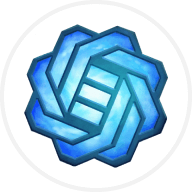Stella, antes conocido como Alpha Finance Lab, es un protocolo que ofrece estrategias de apalancamiento con costes de préstamo sin intereses. La introducción de Stella responde a la necesidad de un sistema de apalancamiento eficaz dentro del espacio de las finanzas descentralizadas (DeFi). Al proporcionar una gran liquidez y una base sólida, Stella pretende ofrecer a los usuarios mayores oportunidades de apalancamiento de forma descentralizada.
¿Qué es Stella?
Actualmente en fase de prueba, Stella es un protocolo DeFi diseñado para ofrecer costes de préstamo sin intereses. El token de utilidad de la plataforma, ALPHA, desempeña un papel fundamental a la hora de proporcionar a los usuarios acceso en la cadena a una amplia gama de estrategias de apalancamiento. Además de los préstamos sin intereses, los grupos de préstamos de Stella generarán rendimiento para los prestamistas, creando oportunidades para que ganen intereses sobre sus tokens.
El equipo de Stella
Stella (antes Alpha Finance Lab) cuenta con un equipo central de producto de gran talento. Tascha Punyaneramitdee dirige el proyecto como Jefa de Proyecto, con experiencia previa como responsable de estrategia en Band Protocol, Directora de Producto en Tencent y Analista de Banca de Inversión en Jefferies. Nipun Pitimanaaree es el Director Técnico, y aporta su experiencia como antiguo Director de Investigación de OZT Robotics. Por último, Arin Trongsantipong ocupa el puesto de Jefe de Producto, con funciones anteriores como Ingeniero de Software en SCB 10X, SCBC y Cleverse.
¿Cómo funciona Stella?
El protocolo Stella consta de dos componentes clave: Stella Strategy y Stella Lend, que ofrecen distintas oportunidades a los usuarios:
- Stella Estrategia: Los estrategas obtienen acceso a una diversa gama de estrategias apalancadas con préstamos a interés cero. Al participar en la Estrategia Stella, los estrategas pueden obtener rendimientos de sus posiciones apalancadas. Los rendimientos generados por la Estrategia Stella se comparten con los prestamistas, lo que les permite beneficiarse del rendimiento de la estrategia.
- Préstamo Stella: Los prestamistas pueden contribuir con sus activos a los fondos de préstamos de Stella y obtener rendimientos.
El token nativo de Stella: ALPHA
El token ALPHA sirve como token de utilidad en el corazón del ecosistema Stella, ofreciendo una amplia gama de servicios y beneficios. Con un suministro total de 1.000 millones de tokens, en el lanzamiento inicial se pusieron en circulación 174,1 millones de tokens. Con el tiempo, la mayoría de los tokens se han emitido y están alcanzando progresivamente la oferta total.
Casos de uso de ALPHA
El token ALPHA desempeña un papel crucial dentro del protocolo Stella, ofreciendo una serie de casos de uso a sus usuarios. En primer lugar, sirve como moneda transaccional para prestamistas, prestatarios y otras funciones de la cadena dentro del protocolo. Además, los titulares de ALPHA pueden apostar sus tokens para recibir recompensas en forma de comisiones del protocolo y tokens de proyectos incubados previamente. Además, los titulares de tokens ALPHA también obtienen derechos de gobierno, lo que les permite participar activamente en la configuración del futuro del protocolo.
Poseer un determinado volumen de tokens ALPHA puede desbloquear privilegios adicionales, como el acceso a la venta de tokens. A medida que el protocolo Stella siga evolucionando, se espera que se amplíen los casos de uso de ALPHA.
Distribución de ALPHA
ALPHA se distribuye de la siguiente manera:
- 10 %: Venta pública
- 5 %: Lanzadera
- 20 %: Minería de liquidez
- 19,5 %: Equipo y asesores
- 10,83 %: Venta privada
- 34,67 %: Colaboradores del ecosistema Stella
¿Qué le depara el futuro a Stella?
Stella prevé un futuro en el que los stakers ganarán más comisiones a medida que la plataforma se haga más popular y las posiciones apalancadas generen mayores rendimientos. Mientras el panorama de la DeFi sigue evolucionando, Stella pretende redefinir el funcionamiento de las plataformas DeFi apalancadas estableciendo un sólido sistema de apalancamiento. Con ello, Stella pretende remodelar la forma en que los usuarios interactúan con las estrategias apalancadas y desbloquear nuevas posibilidades para el ecosistema.



















Sociales